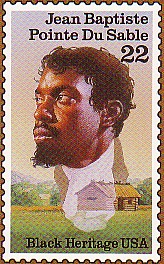World’s Fair Exhibit Championed Black Chicago
/https://tf-cmsv2-smithsonianmag-media.s3.amazonaws.com/filer/du-sable-cabin-charles-c-dawson-520.jpg)
The 1933 Chicago World’s Fair touted itself as a celebration of a century of progress. And in part, this was true. Advances in science and technology were promising a brighter tomorrow to Depression-era America. But when it came to social change, the fair came up short.
Exhibits at the fair were rife with the regrettable iconography of mammies, happy slaves and extreme Western visions of tribal culture. Even worse were the discriminatory business practices against black attendees.
It was Annie E. Oliver, an educator and active clubwoman, who championed Chicago’s black community at the fair with her exhibit on Jean Baptise du Sable.
Du Sable was Chicago’s first non-Native American settler. The son of a Canadian Frenchman and a black slave, he made his fortune through a trading post and prosperous farm set up on the banks of the Chicago River where he lived with his Pottawatomie wife and two children between 1774 and 1800.
Oliver, with the support of her fellow clubwomen, raised the funds to erect an eight foot by 12 foot reproduction of Du Sable’s cabin (about a third the size of the original). They also sold a booklet (pictured above) to educate visitors about Du Sable, the pioneer whose personal story was representative of Chicago’s development as a commercial center and cultural crossroads.
In her new book, The 1933 Chicago World’s Fair, Cheryl R. Ganz writes, "the women used their fair exhibit to counter gender and racial bias while claiming the African American’s rightful place in Chicago history."
The concession attracted fairgoers of all ethnic backgrounds and was successful in spreading awareness of nonwhite contributions to Chicago in addition to nurturing positive images of black Americans and women.
"Certainly the booklet and the Du Sable cabin validated the African American clubwomen’s claim that their race deserved recognition for its contributions to Chicago’s past and would undoubtedly share its march into the future," writes Ganz
Cheryl R. Ganz, chief curator of philately at the Smithsonian National Postal Museum, will be available to sign her book, The 1933 Chicago World's Fair: A Century of Progress on Friday, December 12 and 19 at Noon. This event will be held at the Postal Museum.
